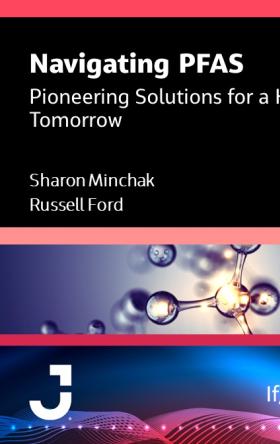Lead and Copper Rule Revisions: Optimizing Corrosion Control Treatment
By Lauren Wasserstrom

Since the Lead and Copper Rule Revisions (LCRR) were finalized in 2021, we’ve been supporting drinking water systems across the U.S. as they undertake the new regulatory requirements and prepare for a fast-approaching compliance deadline in October 2024. While much of the focus to date has been on the development of inventories and replacement plans for lead service lines, there are other LCRR requirements that water systems are preparing for – and one is the need for optimized corrosion control treatment.
Corrosion control treatment (CCT) involves adjusting the water chemistry to reduce the corrosivity of the water toward metal plumbing materials in the distribution system and minimize the potential release of metals, particularly lead and copper, into drinking water. While many communities already have CCT strategies in place, the LCRR introduces stricter requirements for all public water systems.
The rule creates a new trigger level of 10 parts per billion (ppb) of lead in drinking water that may require water systems to undertake corrosion control studies, as well as if the 15 ppb action level is exceeded and/or prior to a source water or treatment change. The rule also requires optimization or re-optimization of CCT with review of pH/alkalinity adjustment and/or corrosion control inhibitors (orthophosphate or silica.) Water systems with lead service lines may also be required to perform pipe-rig studies and evaluate orthophosphate.
In addition, there are stricter sampling and monitoring requirements, especially for systems with lead service lines. The result is that more water systems will need to determine or re-optimize CCT under the LCRR.
CCT assessments begin with a review of water quality at the point of entry, within the distribution system, and at the point of consumption. These desktop evaluations of water chemistry – that are often supported by corrosion control modeling, pipe scale analysis and lead profile sampling – are used to assess the potential for corrosion, the sources of metals release and the need for corrosion control.
Once the need for corrosion control has been confirmed, the unique circumstances of the drinking water system are reviewed to identify and evaluate appropriate corrosion control alternatives. These may be treatment-based, such as pH and alkalinity adjustment or the use of a phosphate-based corrosion inhibitor, and non-treatment-based, such as lead service line replacement.
A comprehensive corrosion control strategy can then be developed around the preferred corrosion control alternative – and typically includes planning for implementation, public outreach and post-implementation monitoring. In many cases, a pilot or demonstration study is required to assess the potential performance benefits and confirm design parameters for a treatment-based corrosion control approach.
As communities continue to implement LCRR compliance actions, effective CCT will remain an important strategy to further reduce lead exposure in drinking water. At Jacobs, we’ve been helping municipalities manage corrosion in their distribution systems for decades – providing more than 8.2 million people in the U.S. and Canada with corrosion control protection – and we offer comprehensive support and services.
You can learn more about corrosion control at the AWWA Annual Conference (ACE23), June 11 – 14, where my colleagues Jennifer Liggett, Tugba Akgun and I will be participating in several discussions on the topic. During the afternoon of June 13, I’ll be moderating a session ‘Optimizing Corrosion Control Treatment: Back to Basics’ which will provide practical guidance for developing and implementing effective CCT strategies. On the LCRR more broadly, I’ll also be presenting recent research that evaluated field analyzers for drinking water testing in schools. Check out Jacobs’ full ACE23 program here – and we look forward to seeing you in Toronto!
About the author

Lauren Wasserstrom is Jacobs’ National Practice Leader for Lead and Copper Rule Compliance. She’s been part of the water community for over 11 years with a background in lead and copper corrosion. Prior to joining Jacobs, Lauren worked for the Greater Cincinnati Water Works implementing the new Lead and Copper Rule Revisions. Lauren also previously worked for AWWA as well as the USEPA Office of Research and Development focusing on corrosion and contaminant accumulation and release in drinking water distribution systems. She is also the current chair of the AWWA M58 Internal Corrosion Control in Water Distribution Systems Manual of Practice.

















































